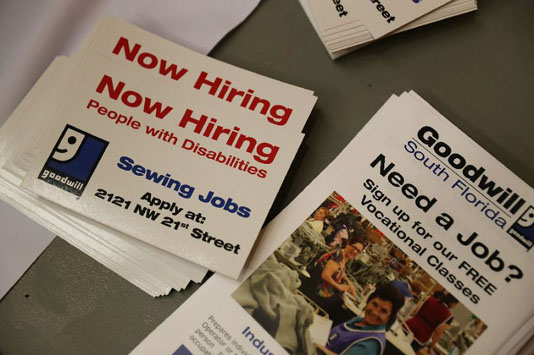WASHINGTON, May 4, 2019 (BSS/AFP) – The United States had another giant month of job creation in April, confirming the strength of the world’s largest economy as President Donald Trump prepares to fend off challengers in next year’s election.
Government data showed continued vigor in the vast services sector, with unemployment falling to a level not seen since 1969, helping allay fears of a slowdown — although the labor force shrank.
As the second quarter began, employers scooped up workers in construction, health care, computer systems design, administrative support and other service industries, adding a total of 263,000 net new positions for the month, the data showed.
That was well above the result economists expected, and worker pay continued to climb, although at a slower pace, according to the closely-watched report from the Labor Department.
The unemployment rate fell two tenths to 3.6 percent but the decline was in part because the pool of workers shrank and fewer people were looking for jobs, pulling them out of the labor force.
The jobless rate for Hispanics fell to the lowest level on record, as did a broader measure of unemployment that includes discouraged workers.
“This economy is roaring,” Vice President Mike Pence told CNBC shortly after the data was released, attributing the performance squarely to Trump’s economic agenda of tax cuts and slashed regulation.
Average hourly pay also rose by 3.2 percent over April of last year, the ninth consecutive month with annual growth above three percent, again outstripping inflation.
Compared to March, however, the increase in pay was only 0.2 percent, shy of forecasts, but economists said this may have been due to distortions from the Easter holiday.
– Manufacturing lags –
Government hiring also was the strongest in eight months, with 27,000 jobs created — likely due in part to hiring for the 2020 US census. Financial services also continued to add employees.
But hiring in the manufacturing sector was weak spot for the third straight month, ending last year’s long growth streak. Durable goods employment was flat and the auto sector continuing to shed jobs.
In the 12 months prior to February, the manufacturing sector had added an average of 22,000 jobs a month, according to the report.
The retail sector also suffered yet more job losses, with 12,000 positions cut.
Hiring in mining, which includes oil and gas, as well as utilities was little changed, the data showed.
There were other signs of weakness as well.
“If one is scouring the report for negatives, one would be the contraction in the workweek and drop in hours worked,” RDQ Economics said in a client note.
“With labor force participation dropping further in April, participation is now flat on a year-over-year basis.”
The three-month average for job creation has also fallen for four straight months and now sits at about 169,000 — below the averages recorded in the same period of 2018 and 2017.
The number of people working part time for “economic reasons” — those who want full-time work but cannot get it — also rose for the second month in a row in May, and at 4.7 million remains above the level from before the Great Recession.
Nevertheless, the brisk hiring should further dim hopes among investors that the Federal Reserve will feel pressure to cut interest rates in the near term.
As unemployment falls to half-century lows and workers become scarce, the continued strength of hiring has confounded predictions that companies would soon run out of people to hire, even as firms nationwide complain they are struggling to fill open positions.
And inflation has for several years defied the usual logic that low unemployment should cause wages and prices to rise.
Opinion is now divided among economists as to whether inflation later this year will at last spring to life and pressure the central bank to bump up lending rates — the opposite of Trump’s very loud recent demands for a drastic interest rate cut.
After several days in the red, Wall Street was cheered by the news, with all three major indices closing higher and the Nasdaq setting a new record high.



